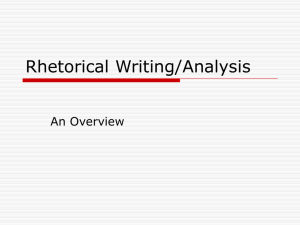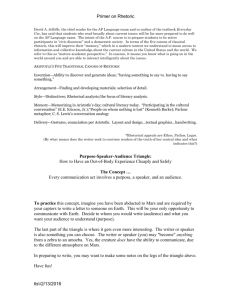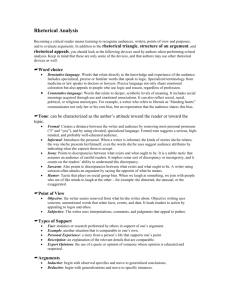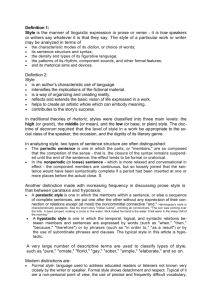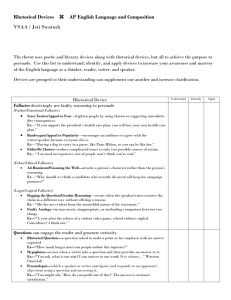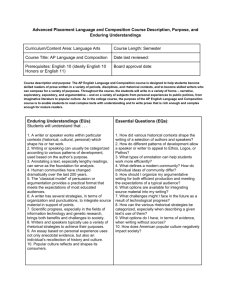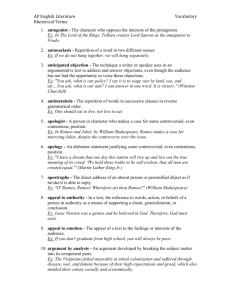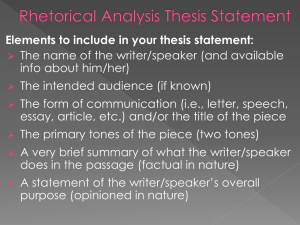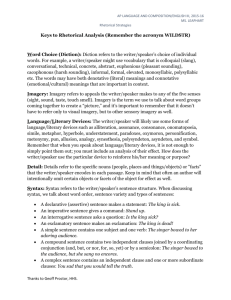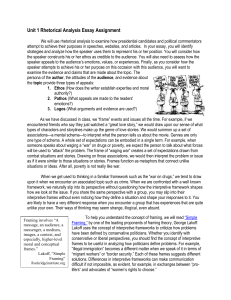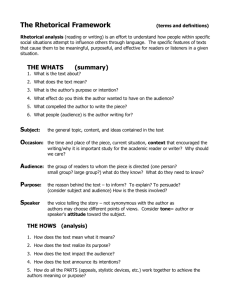Who is the speaker?
advertisement
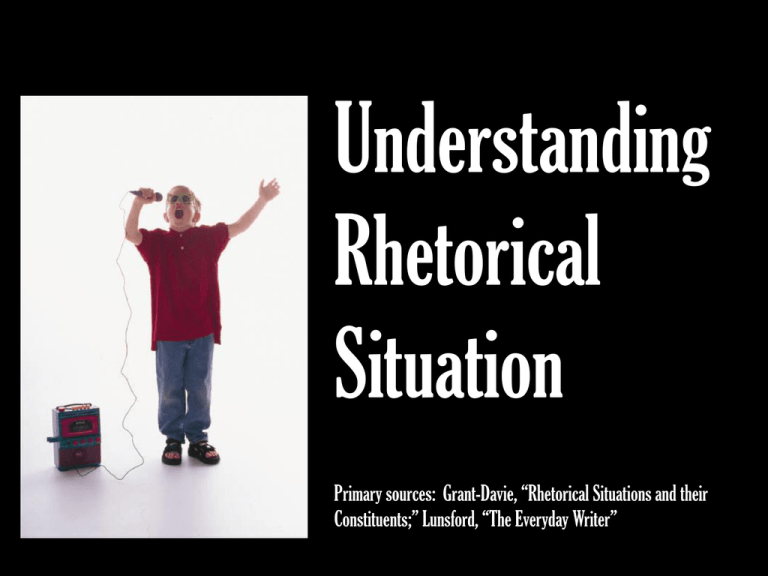
Understanding Rhetorical Situation Primary sources: Grant-Davie, “Rhetorical Situations and their Constituents;” Lunsford, “The Everyday Writer” 1. 2. 3. 4. The speaker or writer and her motivations The audience (intended and unintended) The purpose of the speech or written text The limitations of the message and how the writer works within those constraints. As writers, we write because we want something from our reader. We can want… To inform To persuade To entertain To educate To shock To incite And, we often have multiple goals at the same time. Rhetorical analysis means that you consider all elements of the communication, especially what the writer wants from you… and how she attempts to get it. Who is the speaker? What is the writing about? What is its subject matter? Why is the message needed now? Why does it matter? What triggered the communication? What is the writer trying to accomplish? What are the goals or outcomes of this message? QUESTIONS Who is the speaker? What is the writing about? What is its subject matter? Why is the message needed now? What triggered the communication? POSSIBLE ANSWERS Dove Body image of women. The media’s influence on our perceptions of beauty; selfsabotage of women to meet impossible beauty standards Beyond building self-esteem in girls and women, Dove has a primary goal to persuade viewers to buy products. Who is the intended or primary audience? Who is the unintended or secondary audience? How do both groups influence a message? Consider Facebook. When you update your status—to inform your friends of a problem you’re having— how do you shape your language… knowing that others will be reading it as well? How does that change your message? The genre (medium) the writer uses. Consider how your writing changes when writing an academic paper versus a text message. The delivery and timing. If your next paper was posted on the Internet, how would that influence your writing choices? How do outside events impact your message? What do you add or take out to accommodate these events? Determine the topic. What is the subject and its context? Determine the writer/speaker. Why is she compelled to speak out? What does he want from the reader? What assumptions can I make about the speaker? Determine the audience. Who is responding to this message? Where and why might they read it? Who is the unintended audience and how might they have influenced this message? Determine possible influences of the genre (medium) and outside events. Successful rhetorical analysis includes “proving” what you think. Look for stylistic choices (tone, word choice, language, sentence structure, visuals, etc.) and appeals (logical, emotional, ethical) that the writer uses to support your rhetorical analysis. Then, present those findings to your reader.
